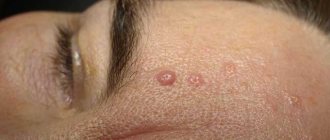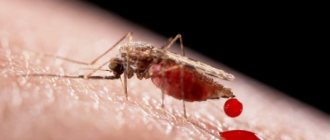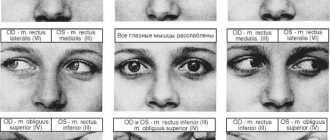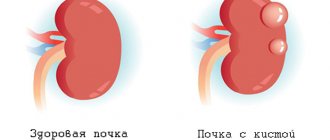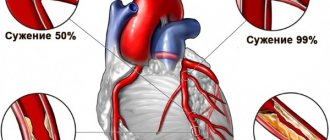Relationship between adenomyosis and endometriosis
Adenomyosis is a type of endometriosis , a disease characterized by the proliferation of endometrial cells outside the uterine lining . Cellular spread occurs through lymphogenous, contact or hematogenous routes. Endometriosis is not a pathological tumor process, since cells located heterotopically do not undergo structural changes.
Along with this, against the background of pathology, various complications may begin. Regardless of where the cells are located, they are all subject to cyclic changes under the influence of sex hormones. They multiply intensively and are subsequently rejected during menstruation. As a result, cysts are formed, inflammatory processes affecting nearby tissues, and adhesions are formed.
Until now, scientists have not been able to establish how often internal and external endometriosis can be combined. However, there are suggestions that women with diagnosed adenomyosis have heterotopic endometrial cells localized in different organs.
Complications
The consequences of adenomyosis can be severe. The most serious is infertility, which occurs due to hormonal imbalance. Also, to conceive and bear a child, a healthy endometrium is necessary, which is not the case with adenomyosis. The embryo simply will not be able to implant normally into the uterine cavity. Often women consult a doctor due to the absence of children in the family. If adenomyosis is treated correctly and in time, pregnancy will occur.
Other complications:
- scarring of tissue, formation of adhesions, which will interfere with natural conception;
- disruption of the menstrual cycle caused by structural changes in the uterine muscles during adenomyosis, due to which it cannot normally perform its contractile function;
- malignancy;
- development of external genital (beyond the uterus) or extragenital endometriosis (beyond the boundaries of the reproductive organs, not only into nearby tissues, but throughout almost the entire body);
- pelvic pain syndrome.
In advanced stages of endometriosis, intestinal obstruction, anemia, and decreased immunity may occur.
Classification and degrees of uterine adenomyosis
Taking into account the location of formation of lesions, as well as the stage of prevalence of the pathological process, the disease is divided into the following types:
- Focal. Certain areas of muscle tissue contain particles of sprouted uterine epithelium. They can be either single or multiple.
- Nodal. Around the epithelial particles, a shell consisting of connective tissue is formed. Inside the capsule has cavities that are filled with blood fluid. In appearance, these neoplasms are similar to fibroids. May occur simultaneously with them.
- Diffuse. Large lesions begin to form inside the walls of the cervix. They do not have clear contours and can extend to different depths. When germination occurs on nearby organs, it provokes the formation of fistulas.
In some cases, specialists detect symptoms of several types of illness at once.
Depending on the progression of the disease, adenomyosis goes through 4 stages of development :
- The muscle tissue located under the mucosa is damaged.
- Epithelial cells grow to the middle .
- The entire muscle layer is affected , but endometrial cells do not spread beyond its boundaries.
- Penetration of endometrial particles into the peritoneum and the organs located in it is noted
Adenomyosis can affect various parts - the cervix, tubes. The disease in most cases is diagnosed in women aged 30-45 years.
General information. Adenomyosis - what is this disease?
Adenomyosis is a disease of the genital area in women. It is directly related to the hormonal processes that take place in the female body. This disease is considered to be a type of endometriosis . Due to its location - in the muscular layer of the uterus, it is also called internal genital endometriosis .
With this disease, the tissue of the uterine mucosa, that is, the endometrium , ends up in other parts of the female body. In the case of adenomyosis, this is the muscular layer of the uterus. After this, their gradual growth begins, which negatively affects the operation of the system as a whole. a hormonal imbalance occurs the immune system is disrupted , resulting in pain. Sometimes a condition similar to allergic manifestations occurs - for example, swelling or this part may increase in size.
According to experts, the majority of patients diagnosed with adenomyosis are women between thirty-five and forty years old. Obviously, the reason for this peculiarity of the disease is that at a younger age, a woman’s immunity is resistant to harmful factors. In middle age, the female body’s resistance to negative influences is much lower.
Causes
To date, experts have not been able to establish the exact factors that contribute to the development of adenomyosis. The disease can occur at any age, both in nulliparous and in women who have given birth. Thus, there is no connection between the pathological process and the age category of the patients. Only risk factors against which the disease may begin to develop were identified.
Hereditary predisposition
If a patient has a history of adenomyosis and oncopathology of the reproductive system among her close female relatives, then she is more susceptible to various gynecological diseases. Such women should not neglect precautions and undergo regular medical examinations.
Hormonal imbalances
Adenomyosis is a hormonal disease. That is why, with an imbalance of hormones, the likelihood of developing pathological processes in the uterus increases . Deviations can be triggered by early or late puberty , taking birth control pills or hormonal drugs over a long period of time.
Uterine injuries
When the cervical mucosa is damaged, endometrial cells are able to penetrate the muscle layer, thereby contributing to the onset of the disease. The integrity of the organ can be compromised during surgery to remove fibroids, polyps , as well as during abortion and other surgical procedures . Installation of an intrauterine device can also provoke adenomyosis.
Childbirth
Childbirth is a fairly traumatic process. Complications, late onset of labor and other factors can cause the disease.
Prevention
Uterine adenomyosis has no specific prevention. To avoid illness, you need to follow medical advice:
- attend medical examinations;
- do not delay the treatment of infectious processes in the reproductive system;
- do not abuse ultraviolet radiation, visit baths, steam rooms;
- perform personal hygiene regularly;
- lead an active lifestyle;
- remove bad habits;
- eat well;
- improve immune status;
- Select oral contraception only with your doctor.
Adenomyosis is highly treatable if diagnosed and treated early. If it comes to complications of adenomyosis, when you can’t get pregnant, then you should consult a fertility specialist and resort to ART.
Symptoms
The main feature of adenomyosis is its asymptomatic course . For a long time, representatives of the fair sex may not observe any characteristic signs of the pathological process. But the following signals should be a cause for concern, as they may indicate the onset of the disease:
- long menstruation;
- excessive bleeding;
- admixtures of large blood clots.
Against the background of severe blood loss in patients, the concentration of hemoglobin decreases , which provokes the development of iron deficiency anemia . As a result of this, the woman begins to worry about other signs indicating disturbances in the body:
- weakness;
- pale skin;
- increased drowsiness;
- decreased ability to work;
- shortness of breath even with minor physical exertion;
- fainting.
unpleasant sensations arising during intimacy will indicate adenomyosis . Also, during menstruation, pain is more severe than usual . The location of the pain syndrome is the isthmus of the uterus.
Severe painful sensations are the first sign that the disease is developing. Pain begins to appear several days before the start of the menstrual cycle and persists throughout the entire period of menstruation, as well as after it.
When the uterine isthmus is damaged, the pain begins to spread to the rectum or vaginal area. If the pathological endometrium is located in the corner of the uterus, then pain will be localized in the groin area on the affected side.
It is important to remember that the clinical signs of adenomyosis are directly related to the stage and form of the pathological process.
In practice, rare cases have been recorded when the disease could be diagnosed based on signs that appeared in the early stages of development, since during this period it is not accompanied by any symptoms. The disease of the diffuse type of the second degree is determined solely by chance. The nodular form is easiest to detect, since the severity of the clinical picture depends on the size of the nodes.
Symptoms of focal adenomyosis
- Pelvic pain syndrome: constant, not associated with menstruation, nagging pain in the lower abdomen, radiating to the lower back and/or rectum.
- Painful menstruation.
- Painful intercourse.
- Spotting, bloody (brown or “chocolate”) discharge from the genitals: acyclic contact, before and/or after menstruation.
- Heavy menstruation (hypermenorrhea).
- Sometimes: dysfunctional uterine bleeding.
- Sometimes: posthemorrhagic (secondary) anemia.
- Spontaneous miscarriages, premature birth, abnormal postpartum bleeding.
- Infertility.
Can focal adenomyosis be asymptomatic? YES! In 12% of patients, the disease is detected by chance, on ultrasound, during a routine examination.
Return to contents
Diagnostics
In most cases, to detect the disease, especially in the early stages, ultrasound , which is performed regularly for the purpose of prevention or, if necessary, to identify the cause of infertility.
On an ultrasound, the following signs will indicate the development of pathology:
- the uterus has a spherical shape;
- the uterine walls are thickened asymmetrically;
- the affected areas have increased echogenicity;
- basal layer of the endometrium with irregular boundaries.
To obtain expanded information, specialists use transvaginal ultrasound .
To differentiate adenomyosis from diseases such as adnexitis, fibroids, inflammation, the gynecologist examines the patient in a chair . Laboratory and instrumental studies are also carried out , which include:
- blood test to detect hormones;
- taking a sample of biomaterial from the vagina for cytological examination;
- colposcopy , which allows you to detect small pseudoendometrium in the cervix and vagina;
- magnetic resonance imaging;
- hysteroscopy - examination of the uterus using an endoscope;
- checking target systems - cardiovascular, respiratory, urinary, gastrointestinal tract - in order to identify affected areas in the last stages of development of the pathological process.
Only comprehensive diagnostics makes it possible to determine the presence of the disease at the initial stage, as well as to identify the extent of damage and severity in the later stages.
Diagnosis of adenomyosis
To diagnose internal endometriosis, a consultation with a gynecologist is carried out, which includes studying the patient’s complaints, collecting anamnestic information and a gynecological examination. Laboratory and instrumental tests are also prescribed.
A gynecological examination is performed before menstruation. The detection of nodes, tuberosities or an enlarged spherical uterus in combination with heavy, prolonged and painful periods, as well as signs of anemia and painful sensations during sexual intercourse is a reason to suspect the development of adenomyosis.
The main method for diagnosing adenomyosis is ultrasound. The most accurate research results (85-90%) can be obtained through transvaginal diagnostics (through the vagina). The ultrasound scanning procedure, as well as the chairside examination, is performed on the eve of menstruation. Signs of adenomyosis on ultrasound include varying thickness of the uterine walls, spherical and enlarged shape of the organ, the presence of cystic formations with a diameter of more than 3 mm, which appear in the uterine wall before menstruation.
Diagnosing the diffuse form of adenomyosis using ultrasound is much more difficult. For this purpose, the method of hysteroscopic examination is used. In addition, hysteroscopy allows you to exclude endometrial hyperplasia, polyposis, uterine fibroids, malignant neoplasms and other gynecological pathologies.
As part of the differential diagnosis, an MRI may be prescribed, which makes it possible to detect changes in the structure of the myometrium, thickening of the uterine walls and foci of the spread of endometrioid tissue into the myometrium. MRI also allows you to evaluate the structure and density of nodes.
To identify hormonal disorders, inflammatory processes and signs of anemia in adenomyosis, laboratory tests of blood and urine are prescribed.
Treatment
The choice of methods for carrying out therapeutic measures in each case is carried out on an individual basis. In the absence of characteristic symptoms, treatment is usually not carried out. In this case, the patient is systematically monitored.
When prescribing therapy, it is necessary to take into account the patient’s age, general health, and severity of the disease.
Surgical
Surgery is prescribed only in cases of rapid progression of the pathological process, which is accompanied by anemia, concomitant diseases in the uterus and the onset of menopause. Damage can be removed using various methods:
- hysteroscopy – surgical intervention is carried out through the vagina using a special device that allows you to remove nodes and conduct video monitoring of the operation;
- laparoscopy - considered one of the most progressive and low-traumatic techniques, in which the affected lesions are removed through holes in the peritoneum;
- abdominal removal - the essence of the procedure is an incision on the skin and uterine wall, which makes it possible to act directly on the pathogenic endometrium;
- hysterectomy – used in extreme cases when it is necessary to completely remove the uterus.
Varieties
According to the type of development, uterine adenomyosis is of three types:
- diffuse;
- focal;
- nodal.
Nodular is characterized by the appearance of nodular neoplasms from glandular tissues surrounded by connective tissue. Inside the nodes there are cavities filled with fluid or blood. Typically, nodes are formed in groups and have a dense structure. Similar to uterine fibroids, which are often accompanied.
Focal is distinguished by the local nature of its distribution. It develops in areas of the myometrium that are similar in functionality and structure to the endometrium. These areas are called foci of adenomyosis.
Diffuse is characterized by the fact that the structure of the endometrial tissue is changed due to uniform growth into the thickness of the uterine tissue. In this case, clearly defined areas are not formed.
The most common form of adenomyosis is diffuse. With this disease, pathological foci of the endometrium do not form, and the pathological process of diffusion affects the layers of the uterus. Clinical symptoms of the diffuse form are similar to those of other forms of the disease. Sometimes diffuse adenomyosis is combined with focal adenomyosis, or there is a diffuse nodular form of adenomyosis. These are combined variants of the disease.
Adenomyosis is classified into four stages according to the progression of the pathological process:
- I – the process is limited to the uterine mucosa and does not affect other tissues;
- II – the pathological focus extends to the middle of the muscular layer of the uterus;
- III – the muscular layer of the uterine walls is changed (up to the serous layer);
- IV – the process spreads to the serous membrane of the uterine wall and spreads to neighboring organs.
At the 4th stage, an enlargement of the uterus and bloating of the abdomen are observed, a feeling of heaviness and pressure appears in the abdominal cavity.
Complications of adenomyosis
Every woman should understand that pseudoendometrium cannot degenerate into a malignant tumor. However, if measures to eliminate the disease are not taken in a timely manner, the risk of adverse consequences increases significantly.
Lack of treatment can lead to complications such as anemia, infertility, severe blood loss, spread of pathological cells to other organs, and relapses after therapeutic intervention .
Adenomyosis during pregnancy
Adenomyosis during pregnancy is a common occurrence in the practice of gynecologists. At the same time, getting pregnant and carrying a fetus is quite possible, although the process itself will be quite complicated; the expectant mother should constantly undergo examination and examination by a gynecologist.
In some cases, a pregnant woman is hospitalized for conservation and thus achieve not only the preservation of the patient’s health, but also her unborn child. The main thing is to listen to your body, since there is a high probability of developing uterine bleeding and fetal loss.
Treatment of adenomyosis during pregnancy is a mandatory medical measure, as is the prevention of pathology in the postpartum period. All this creates favorable preconditions for the harmonious development of the fetus and its normal gestation, and the successful course of childbirth.
How dangerous is adenomyosis during pregnancy?
The question is ambiguous for many - in the practice of doctors, there are cases when, without undergoing a course of treatment, a woman not only could not get pregnant, but also carry a child, and became infertile.
In other cases, there are cases where, without the help of doctors and surgical treatment, a woman could carry and give birth to a healthy baby.
Western doctors believe that there is no direct relationship between adenomyosis and pregnancy, much less a threat to the latter.
This disease can become a significant problem and obstacle to conception and subsequent pregnancy only if it is accompanied by other diseases that affect the organs and systems of the pelvic region. According to statistics, after surgical treatment, according to statistics, 35-60% of women can become pregnant.
What is most important is that pregnancy can become a panacea for a woman in the treatment of such a disease as adenomyosis.
Doctors explain this phenomenon by the fact that during gestation there is no menstruation, the hormonal levels are rearranged and this will slow down the growth process of the pathological endometrium.
That is why it is so important to consider each individual case individually, and not to ignore visiting a doctor, examination and treatment prescribed by a specialist.
Detection of other pathologies
It should be noted that such manifestations of adenomyosis rarely occur on their own. The disease is dangerous due to concomitant lesions of the uterus and other organs of the female reproductive system. Hormonal disorders can cause breast mastopathy, which is determined during examination by a mammologist. Often, during an ultrasound, the doctor discovers uterine fibroids - a benign neoplasm consisting of muscle tissue.
An ultrasound examination may reveal cysts of the left or right ovary. In this case, a differential diagnosis with other forms of endometriosis is necessary. Unlike adenomyosis, with this type of pathology, nearby organs are involved in the process. Often, endometrial hyperplasia may be accompanied by the replacement of normal cervical epithelium with atypical one. These diseases are called ectopia and leukoplakia.
During a comprehensive examination, it will be necessary to take blood tests. Inflammation is indicated by leukocytosis and increased ESR. A cytological smear is also taken from the cervix. If neutrophilic granulocytes are detected, additional tests should be done to detect human papillomavirus (HPV), Trichomonas and other representatives of pathogenic microflora.
The malignant course of adenomyosis can be determined by testing for markers of various types of cancer. If positive results are obtained, it is better to continue treatment in modern Moscow clinics. The Republican Perinatal Center in Ufa or other Russian cities is also famous. According to numerous reviews on specialized forums, the best gynecologists in the country work there. We are now talking about adenomyosis immediately after birth.
What is the danger?
Adenomyosis is a rather dangerous disease that requires quality treatment.
If this pathology is ignored, the following consequences may develop::
- Transformation into oncology. Of course, it is impossible to say that adenomyosis will necessarily end in cancer, but women with this diagnosis increase the risk of developing this disease. This happens due to constant hormonal fluctuations. Adenomyosis does not lead to cancer, but only increases its possible risk (the pathology is shown in the photo).
- Anemia. With constant bleeding and prolonged heavy menstruation, anemia develops, which entails oxygen starvation of the entire body.
- Infertility. If adenomyosis progresses to grades 3 and 4, the endometrium becomes incompetent and pregnancy is impossible. But even in the first two stages, when conception is in principle possible, maintaining a pregnancy is quite difficult.
- Disruptions in the menstrual cycle, which can significantly worsen a woman’s quality of life.
Treatment Options
Treatment of adenomyosis can be carried out using several methods :
- Palliative care . This treatment does not directly affect the disease itself and is only symptomatic. In this case, anti-inflammatory and painkillers are prescribed to relieve the symptoms of the disease.
- Treatment with hormones . Oral contraceptives and other hormonal drugs are prescribed that help normalize the menstrual cycle and also improve the synthesis of sex hormones.
- Minimally invasive operations . Laparoscopy and hysteroscopy. These are interventions that are organ-preserving operations and consist of curettage or ablation. It must be said that such treatment in some cases retains the effect temporarily, and relapse of the disease is quite possible.
- Hysterectomy . This is the most common and most effective method of getting rid of the disease. It is carried out in several ways - removal of only the body of the uterus, removal of the uterus along with the cervix, removal of the uterus and the upper part of the vagina. In some cases, it is necessary to remove not only the reproductive organ, but also appendages, tubes and neighboring organs involved in the pathological process.
Treatment with folk remedies
Alternative medicine can also be used for uterine adenomyosis, but only as an auxiliary method agreed with the doctor. It should be borne in mind that some herbs cannot be combined with hormonal drugs. Before using any means, you need to understand exactly how they act on the organs of the reproductive system. In any case, folk recipes cannot replace drug therapy, and you should not expect a pronounced therapeutic effect from them.
In the treatment of adenomyosis, the following plants are most popular:
- Red brush.
- Borovaya uterus.
- Chamomile.
- Nettle.
- Shepherd's purse.
- Plantain.
- Oak bark.
- St. John's wort.
- Tansy.
- Air.
- Viburnum bark, etc.
These herbs are used to prepare decoctions intended for oral consumption and for douching.
In addition, supporters of alternative medicine recommend hirudotherapy (leech treatment), as well as blue clay wraps. It is believed that these methods help improve blood microcirculation, accelerate myometrial regeneration processes, and have an anti-inflammatory effect.
Treatment of nodular adenomyosis
Management of nodular adenomyosis is similar to the treatment of uterine fibroids: small
Conservative treatment methods
Indications for drug treatment of nodular adenomyosis:
- Knot size
- Chronic pelvic pain associated with adenomyosis.
- Menstrual irregularities without anemia in the patient.
- Contraindications to surgical treatment (severe somatic pathology).
For conservative treatment of pain, nonsteroidal anti-inflammatory drugs (NSAIDs), combined oral contraceptives (COCs), for example Zhanine, or synthetic progestogens (Norkolut, Orgametril, etc.) are used continuously.
Conservative treatment of adenomyosis is carried out with hormonal agents that suppress the production of the patient’s own sex steroids. Traditionally, gonadotropin-releasing hormone (A-GnRH) agonists are used for these purposes: Buserelin, Zoladex, Diferelin, etc. The course of taking these drugs should not exceed 6 months. In the absence of contraindications, intrauterine progestin-containing devices (LNG-IUD Mirena), as well as aromatosis inhibitor drugs (Letrozole, Anastrozole), are successfully used.
Is it possible to be cured without surgery?
Conservative therapy for any form of adenomyosis does not eliminate the problem completely. Hormonal drugs help reduce the size of pathological lesions and attenuate the symptoms of the disease.
Currently, drug treatment of adenomyosis is largely in addition to surgical removal of endometriotic implants (foci, nodes).
It is impossible to achieve a complete cure of nodular adenomyosis using medications alone.
Operations for adenomyosis
If conservative therapy is ineffective or inappropriate, the nodular form of adenomyosis is treated surgically
Traditional types of surgical treatment:
- Hyterectomy is the total removal of the uterine nodes affected.
- Laparoscopic excision of adenomyoma followed by restoration (reconstruction) of the uterine wall.
Indications for surgical treatment:
- Nodular adenomyosis, accompanied by bleeding, secondary anemia.
- Localization of the node in the isthmus.
- Infertility associated with adenomyosis.
- Intolerance or ineffectiveness of conservative therapy.
- Contraindications to long-term hormonal treatment (cholelithiasis, kidney stones, thyrotoxicosis, uncompensated hypertension, diabetes, etc.)
- Recurrent nodular adenomyosis.
The scope and method of surgical intervention for nodular adenomyosis are individual for each patient. It all depends on the patient’s age, her desire to preserve fertility, the severity of the clinical manifestations of the disease, and concomitant gynecological and somatic pathologies.
Hysterectomy remains the method of choice for the treatment of nodular adenomyosis with severe symptoms.
Radical surgery provides a 100% cure for adenomyosis, but becomes a death sentence for a nulliparous woman.
Therefore, well-known and innovative organ-preserving operations are in demand for surgical treatment of nodular endometriosis in reproductive age:
- Enucleation of adenomyosis node and myometrectomy with metroplasty.
- Laparoscopic coagulation or embolization of the uterine arteries.
- Hysteroscopic removal of the submucosal adenomyotic node with a loop electrode followed by resection of the endometrium.
- Ligation of the internal iliac arteries.
- Laser and ultrasound techniques (ILTT, FUS ablation, etc.)
Surgical procedures are performed according to indications using laparotomic or hysteroscopic access. But preference is given to laparoscopy.
What is ILTT?
ILTT is interstitial laser-induced thermotherapy of the uterus using a Ho-YAG laser device. It is used to treat nodular adenomyosis when the size of the uterus does not exceed 8-10 weeks of pregnancy.
The essence of the method: the effect of laser energy on the pathological tissue of adenomyoma. The desired result of this operation: aseptic necrosis, destruction of hormonal receptors and growth factors in the adenomyotic node.
In case of nodular adenomyosis, ILTT is performed using hyteroscopic or laparoscopic access (depending on the location of the nodes) without prior hormonal preparation, preferably on days 5-7 of the menstrual cycle.
What is FUS ablation?
A new, fairly safe and promising direction in the non-invasive treatment of adenomyosis has become the method of FUS ablation of nodes under MRI control.
The essence of the method: remote destruction of the adenomyotic node with focused ultrasound.
Clinical effectiveness of FUS ablation: 76-89%.
Unfortunately, none of the organ-preserving surgical techniques excludes the recurrence of nodular adenomyosis or guarantees a final recovery and preservation of the patient’s fertility.
Scheme of combined treatment of nodular adenomyosis Return to contents
Types of disease
Since this disease is focal in nature and has varying degrees of damage, it is classified by type:
- Focal - isolated areas of damage to the muscles of the cervix are observed. There can be many of them throughout the uterus, but only one foci at a time.
- Nodular - several foci located side by side, and covered with a film, creating a kind of capsule with blood inside. The nodular type of adenomyosis is similar to the nodular myomatosis, which is also often found in women with this disease.
- Diffuse - lesions are massively concentrated in one place with varying depths of muscle damage. The affected area does not have clear boundaries and there is a possibility of infection of the abdominal organs.
With prolonged progression of the disease, several types of uterine lesions are often observed.
In addition to the fact that the disease is classified by type, there are also different degrees of progression of the pathology of this disease.
- 1st degree. Damage only to the muscle tissue located under the mucous membrane (the depth of the lesion is not significant).
- 2nd degree. The lesion penetrated to the middle of the uterine muscles.
- 3rd degree. Damage to the entire muscle layer, without extending beyond the outer tissues of the uterus.
- 4th degree. Infection occurs in the abdominal cavity, and in particular the organs themselves.
Hormonal therapy with gestagens
The doctor must decide how to treat uterine adenomyosis based on examination data and test results. Self-administration of drugs can lead to serious physiological complications, which result in surgical removal of the woman’s reproductive organs. The gold standard for treating uterine adenomyosis is hormonal therapy. Progestins are often prescribed and should be taken for at least 6 months.
These are synthetic analogues of the ovarian corpus luteum hormone progesterone. Increasing its concentration will help reduce the effect of estrogen and cause endometrial atrophy. However, 10% of patients show resistance to such hormonal therapy. The following drugs are used:
- Depo-provera. It is available in the form of a suspension for intramuscular injections, which is not always convenient. In addition, it is not prescribed to women planning to give birth in the future, since the medicine strongly inhibits ovarian function.
- Mirena intrauterine device. Determined by a doctor, it may cause long-term amenorrhea. The advantages include a long period of use - 5 years, continuation of ovulation, contraceptive effect, which eliminates the need for abortion during hormonal therapy.
- Utrozhestan. The drug can be taken orally or used in vaginal capsules, which increases its effectiveness. Widely prescribed during IVF protocol.
When using such medications, people often complain of weight gain, deterioration of skin and hair, and breast swelling. Breakthrough uterine bleeding in the middle of the cycle is often observed. Treatment of endometriosis with urozhestan and other hormonal drugs is contraindicated in cases of dysfunction of the kidneys, liver and gallbladder, thrombosis and disorders of the circulatory system. If you feel worse or are ineffective, the medicine is changed.
Nutritional Features
The main focus when planning a menu for women with adenomyosis is on the possibility of strengthening the immune system. Therefore, protein foods are a priority. A significant share is made up of products of animal origin due to the presence of essential amino acids in them, which are directly involved in the construction of cells in our body.
The diet is varied with minerals and vitamins, offering various fruit and vegetable variations, juices, and fruit drinks. We must not forget about carbohydrates, without which there is a failure in biochemical processes and metabolism. The most important are complex compounds, which are rich in flour, pasta and coarse baked goods, cereals, and a number of vegetable crops. As for baked goods and sweets, they make up a minimal share of the daily menu.
The choice of cooking method also matters; the best of them are boiling, stewing, or steaming. It is advisable to serve seasonal fruits raw, as well as vegetables intended for such consumption. An important factor is the portion size. It is better to eat a little, but often, up to 5-6 times a day.
The following products will also be beneficial:
- Fiber-rich unrefined grains, bran, legumes, cabbage. It makes no difference what type of green vegetable you choose, the result is always expectedly positive. Thanks to the intake of dietary fiber, there is a decrease in estrogen in the body and a stop in the development of dangerous lesions.
- Fermented milk products, table or mineral water, freshly squeezed juices, green tea, homemade compotes that help remove harmful substances.
- Beets, apples, brown rice, rich in cellulose. Its main property is the regulation of estrogen levels.
- Green peas, celery, garlic, which, along with vegetable oils, stop the excess production of the female hormone.
- Cauliflower and broccoli contain substances beneficial to the liver. Thanks to the activation of enzymes, excess estrogen is effectively eliminated without causing disturbances in the body.
- Low-fat poultry.
It is advisable to cook cereals in uncrushed form. Oatmeal, rice, buckwheat, barley are suitable for the diet. Drinks containing vitamin C are recommended; they strengthen the immune system. Amount to drink per day: one and a half to two liters.
Omega-3 fatty acids
The purpose of such elements is to organize metabolic processes. To saturate the diet with nutritional components, fatty fish, walnuts, pumpkin seeds, vegetable oils (olive, corn, flaxseed, sunflower, sesame), and dark green leafy vegetables are introduced into the diet. The benefit of oils and sea fish lies in their positive effect on the body during heavy menstruation. Thanks to a properly planned diet, distortion of the geometry of the uterus can be prevented.
Prohibited Products
This list includes:
- Butter, hydrogenated lipid compounds.
- Red meat.
- Spicy and fried foods.
- Fatty cheeses.
- Coffee, strong tea.
- Mayonnaise.
- Sweet soda.
Therapy methods
Treatment methods for internal endometriosis are still being discussed; the main requests of patients are either to reduce pain symptoms or cure infertility due to adenomyosis. The latter forces us to look for gentle surgical methods, because drug therapy is considered unsuccessful if it does not bring improvement in the diffuse form within three to six months.
Conservative therapy
Conservative therapy consists of the use of hormonal and anti-inflammatory drugs.
The main representatives of hormonal agents are:
- Oral contraceptives, which should be monophasic. They prevent ovulation, and this leads to the fact that the growth of the endometrium is inhibited.
- Progestogens are synthetic analogues of the pregnancy hormone progesterone and are prescribed if there is a deficiency of it or an excess of estrogen.
- Antigonadotropins (danazol, nemestran) - they disrupt the menstrual cycle, put a woman into a state of pseudo-menopause, are used for six months and have many side effects. After discontinuation of the drugs, menstruation resumes.
- Gonadotropin-releasing hormone agonists (GnRH agonists) - zoladex, lucrine and others. Prescribed for severe stages of the diffuse form, their use leads to a significant lack of estrogen, so return therapy may be necessary. Lack of estrogen has a direct effect on bone mineral density, so there is a risk of developing osteoporosis when taking medications.
- Aromatase inhibitors - in large doses, these drugs are used to treat breast tumors; before using them, it is necessary to stop the ovaries, so it is advisable to prescribe them during menopause.
Anti-inflammatory drugs (ibuprofen, diclofenac) are used for very painful menstruation, but they should not be abused because they have a number of contraindications.
You should not abuse them, because they have a number of contraindications.
Physiotherapeutic procedures
In folk medicine, a popular procedure is hirudotherapy (treatment with leeches). Traditional medicine offers the following procedures:
- Taking radon and iodine-bromine baths, in addition, using microenemas and vaginal irrigation with water with radon. It is believed that radon baths normalize hormonal levels and have a calming and analgesic effect.
- Magnetic and electromagnetic therapy has an anti-inflammatory and analgesic effect.
- Short-wave ultraviolet radiation has a healing effect, so it is recommended after surgery.
- Therapy with pulsed currents of low frequency, electrophoresis of iodine using current promotes a small and gradual release into the blood, accumulating, iodine has a beneficial effect on chronic foci of the disease, but currents cannot be used if a woman suffers from urolithiasis.
Surgical intervention
Surgical intervention is recommended for severe degrees of the disease and if drug treatment does not lead to the proper effect. Radical surgery to remove the uterus is advisable if a woman does not want to maintain reproductive function.
Removal of the uterus is performed using laparotomy (abdominal surgery) or laparoscopy (using punctures); removal of the ovaries must be discussed with each patient individually.
Organ-preserving surgical interventions include: laser ablation (cutting) of the endometrium. With the diffuse form, the difficulty is that the lesions are scattered throughout the uterus; they cannot be removed pointwise, as in the nodular form using laparoscopy or by embolization (blocking) of the uterine arteries.
Preventive measures
In order to protect themselves as much as possible from the occurrence and development of this disease, women must adhere to the following rules:
- examination by a gynecologist 1-2 times a year;
- a diet rich in vegetables and fruits;
- lack of promiscuity;
- refusal of abortions without medical indications;
- control your own weight;
- compliance with the rules of personal intimate hygiene;
- maximum rejection of bad habits;
- treatment of diseases of the endocrine system, if any.
Prevention of adenomyosis
- The best method of preventing a pathological process is the timely detection of the growth of pathological endometrial cells in the uterine body during regular gynecological examinations as part of a preventive program.
- Doctors also recommend that a woman lead a healthy lifestyle , get proper rest, and spend less time in the sun, which has a significant detrimental effect on the body.
- If stressful situations constantly arise at work and at home , it is worth consulting with a therapist regarding taking sedatives, compounds that normalize the functioning of the central nervous system, and undergo a course of massage and physiological procedures.
If you take good care of your body, you can significantly minimize the risk of developing a pathological process, adenomyosis, and other gynecological diseases.
The danger of adenomyosis
If a gynecologist has previously diagnosed adenomyosis, every woman should regularly undergo regular examinations with a gynecologist once every six months, undergo the diagnostics and treatment prescribed by him.
If you ignore your doctor's advice:
- This will provoke severe uterine bleeding and pain in the pelvic area , other unpleasant accompanying symptoms and discomfort during sexual activity.
- Along with this, doctors call the most common pathological consequences of the development of adenomyosis anemia , in which the level of iron in the body is catastrophically reduced. As a result, the body suffers from a lack of oxygen and insufficient production of red blood cells. The consequences will manifest themselves in the form of dizziness and constant drowsiness, pathological decrease in performance, pale skin and other manifestations.
- Doctors call hormonal changes in the body an equally negative consequence , which will undoubtedly manifest itself in the form of irritability and depression.
Why is nodular adenomyosis dangerous?
- Malignancy - active nodes of adenomyosis grow rapidly and can degenerate into a malignant neoplasm. Hyperplastic nodes with cellular atypia are especially dangerous - they often become a source of development of adenocarcinoma of the uterine body.
- Infertility.
- Secondary anemia.
- Decreased quality of life is a consequence of severe pain, hyperpolymenorrhea, anemia, and autonomic disorders associated with nodular adenomyosis.
- Impaired function of neighboring organs (in stage 4 of the disease).
Return to contents
Causes of adenomyosis
If extragenital endometriosis often occurs during retrograde menstruation, when blood does not come out, but flows through the fallopian tubes into the abdominal cavity along with endometrial cells, then the causes of adenomyosis are often associated with damage to the uterine mucosa during medical procedures. This may happen when:
- caesarean section;
- difficult childbirth;
- abortion;
- removal of uterine fibroids and other operations;
- diagnostic curettage;
- diathermocoagulation of erosions;
- use of intrauterine contraceptives.
Adenomyosis often develops in the presence of a hereditary predisposition, disturbances in the formation of the uterus in the embryonic period, hormonal disorders, liver diseases, excess weight, and decreased immunity.
The essence of pathology
If fertilization does not occur, menstruation begins and most of the endometrium is excreted from the body.
With adenomyosis, endometrial cells grow inside the uterus, and this happens not over its entire surface, but in small spots.
In this case, the reproductive organ changes its structure and becomes deformed.
This leads to disruption of the functionality of the organ and to clinical manifestations associated mainly with the menstrual cycle.
Depending on histology, adenomyosis may be:
- Diffuse - multiple focal formations that are scattered over a wide area of the uterus, which causes its tuberosity. Their location in this case is uniform.
- Focal - large single lesions that occupy a small area of uterine tissue.
- Nodular - large neoplasms, which are often combined with the presence of fibroids.
Adenomyosis is also classified according to its severity.
There are 4 degrees of pathology:
- The first degree - the endometrium does not grow much, and is observed in the submycotic layer of the reproductive organ.
- Second degree - changes affect half of the muscle mass of the uterus.
- Third degree - most of the muscle fibers are involved in the pathological process.
- Fourth degree - the endometrium grows so much that it leaves the myometrium and can spread to other organs, including the gallbladder, located in the pelvic region. In this case, the functionality of the affected organs is impaired.
Signs of adenomyosis
The following signs will indicate the presence of the disease:
- The appearance of severe discomfort in the lower abdomen. The pain occurs constantly, and does not have any connection with critical days. Menstruation is accompanied by severe pain.
- Changes occur in the course of menstruation, their duration increases to ten days, and discharge becomes significant. Sometimes bleeding may occur in the middle of the cycle, which often causes anemia. The lengthening of menstruation is associated with the occurrence of spotting, which occurs 2 days before and after it.
- A woman cannot conceive through intercourse, even if contraception is not used. If pregnancy occurs, in most cases it ends in the loss of the fetus.
- Pain during sexual intercourse, and the appearance of bleeding after it.
Adenomyosis of the endometrium and uterine body: main causes
Factors influencing the development of adenomyosis:
- Genetic factor in the relationship of adenomyosis, benign and malignant tumors.
- Excessively late (or vice versa - early) onset of menstruation.
- Late defloration.
- Late pregnancy.
- Difficult birth.
- Overweight.
- Mechanical effects on the uterus (curettage, abortion).
- Use of an intrauterine device, as well as oral contraception.
- Inflammation of the uterus and appendages, bleeding of various types, especially after operations and hormonal therapy.
- Hypertension, the presence of gastrointestinal pathologies.
- Susceptibility to infectious diseases, allergies (factors that signal a malfunction of the immune system).
- Excessive physical activity.
- Low socio-economic status.
- Stress, passive lifestyle.
- Environmental factor.
Forecast
Diffuse adenomyosis in an advanced state can significantly worsen a woman’s life: heavy periods and bleeding will contribute to the development of anemia; due to anemia, a woman will begin to feel constant weakness and dizziness; the solution in this case will be removal of the uterus.
In some cases, regression of the disease occurs during menopause. After the end of hormonal therapy, in 50% of cases, a relapse of the disease occurs a year later, due to the fact that adenomyosis is a chronic disease, it is difficult to predict its course.
Causes of the disease
Hormonal imbalance is important for the development of adenomyosis. Excess estrogen causes the endometrium to grow rapidly, which leads to endometrial hyperplasia. It has been noted that a combination of adenomyosis and hyperplasia may be present in at least 20% of patients.
The suspected causes that cause the development of adenomyosis include:
- Uncontrolled use of hormonal drugs, including contraceptives.
- Genetic reason. A large number of patients had mothers or grandmothers suffering from malignant diseases: about 30% had endometrial or cervical cancer, benign formations (fibroids) occurred in about 70%. In addition, many people had a family history of diabetes mellitus.
- About 35% of patients had an abortion.
- With the diffuse form, a higher percentage of patients were found to have undergone diagnostic curettage.
Nodular adenomenosis and pregnancy
Is pregnancy compatible with nodular adenomyosis? It is impossible to answer this question unambiguously.
Organ-conserving surgery followed by hormonal treatment significantly increases the likelihood of a natural pregnancy. But! Should I wait for spontaneous pregnancy to occur after the end of the combined treatment or do IVF without wasting time?
The EFI fertility index (The Endometriosis Fertility Index) helps the doctor and the patient decide on this issue.
This indicator is calculated based on the results of laparoscopy with assessment of the function of the main reproductive structures.
Table for calculating the EFI fertility rate
The fertility index ranges from 0-10. The higher it is, the higher the likelihood of a natural pregnancy. For low EFI values, the patient is recommended to start an IVF program immediately after completing the combined treatment of nodular adenomyosis.
Correlation of EFI with pregnancy rate Return to contents
Conservative therapy
The basis of drug treatment is hormonal therapy with pain relief. Such treatment is carried out only in the case of a small number of small nodes. Usually this is the first second stage of the disease. The essence of the treatment is to introduce the patient’s body into artificial menopause.
To relieve pain, non-steroidal anti-inflammatory drugs, combined oral contraceptives (the most popular drug is Zhanine) or synthetic progestans such as Norgolut, Orgometril are prescribed.
A course of drugs is also prescribed that suppress the patient’s body’s own production of sex hormones, but for a period of no more than half a year. These are Buserelin, Diferelin, Zoladex and other similar drugs.
In the absence of contraindications for use, intrauterine progestin-containing drugs and an aromatase inhibitor are prescribed.
IMPORTANT!
Conservative treatment of this form of the disease often does not guarantee a complete cure. In the future, pathological growth of the endometrium may resume, due to the return of elevated estrogen levels, and constant correlating hormonal therapy will be required.
Effect on pregnancy
In some cases, the lack of pregnancy with adenomyosis is due not only to excessive growth of the endometrium, but also to a hormonal imbalance.
But most often the cause of infertility lies precisely in the mechanical obstruction of pathological foci for the migration of the egg or seminal fluid.
However, despite the small probability, pregnancy with this disease is still possible, but not desirable.
The disease can cause spontaneous abortion and also negatively affect the development of the fetus.
Traditional methods
Clay treatment
A very effective and efficient method of treatment from the arsenal of traditional medicine.
- In this case, the clay is diluted with water, left for several hours, then boiled in a water bath for 10 minutes.
- A cake is made from the resulting mass and applied to the lower abdomen, leaving for 2 hours.
- The course of therapy is from 5 to 10 procedures.
Treatment with medicinal leeches
According to doctors, the method is quite effective:
- Leeches are applied to active points on the body, and there is an active effect on them.
- At the same time, leech saliva enters the human blood - the latter has a pronounced anti-inflammatory effect, blood flow in the affected area increases and hormonal levels stabilize.
Decoctions and infusions
Angelica
- This plant contains plant phytohormones, estrogen and progesterone, due to the action of which the pathological growth of foci of adenomyosis is reduced, pain is relieved and menstrual cycles are normalized.
- For the decoction itself, it is enough to steam 15 grams of rhizome in 400 ml. boiling water and boil for 10 minutes over low heat.
- After cooling, take 1 tbsp. three times a day, before meals.
- It is forbidden to take during pregnancy and lactation, excessive uterine bleeding.
Swamp cinquefoil
- A decoction of it is taken orally and used for douching.
- To prepare a decoction of cinquefoil - 50 g. the raw material is steamed in a liter of water and boiled over low heat for 10 minutes.
- After this, it should be cooled and strained, then take 200 ml. morning and evening after meals.
- Effective therapeutic results show themselves after 2 weeks - the decoction relieves pain and stops foci of pathological tissue growth, and has an antitumor effect on the body.
Hog queen
An effective plant in the treatment of adenomyosis, since it contains plant flavonoids that have a beneficial effect on hormonal levels and the entire woman’s body.
- A decoction of this plant has an anti-inflammatory and antitumor effect, strengthens the body and helps stop heavy bleeding.
- As doctors note, boron uterus in combination with cinquefoil are 2 effective plants in the fight against adenomyosis.
- To prepare the decoction, brew a tablespoon of the original raw material in 400 ml of boiling water, leave for 15 minutes, and then take it an hour before the main meal.
- The positive therapeutic effect will show itself after 2 weeks - the main thing is not to stop taking the herbs throughout the entire course of treatment.
Siberian ginseng
- The plant hormones included in its composition help restore normal hormonal levels , and copper and selenium, cobalt and other microelements restore blood flow and prevent the development of anemia, suppressing the pathological growth of tumors.
- To prepare a medicinal decoction, simply brew a tablespoon of dry plant in 300 ml of boiling water and simmer over low heat for 10 minutes. After this, leave for an hour and take 100 ml. three times a day, adding honey for taste.
- You can also prepare an alcohol tincture from this plant - 50 g. The rhizomes of the plant are poured with 5 liters of vodka and left for a month in a dark place. After straining, take 50 ml once a day. The main thing is not to take this tincture if you have hypertension and heart failure.
Yarrow
- A decoction of this plant stops the inflammatory process and has a pronounced hemostatic and bactericidal effect. It is used for heavy uterine bleeding and disruption of the menstrual cycle, inflammation affecting the female reproductive system.
- To prepare a medicinal decoction, steam a tablespoon of the dry plant in a glass of boiling water and leave for about an hour. Next, take a third of a glass per day, after the main meal.
- You can also prepare an alcohol tincture - for this, 30 g. The dried plant is poured with 400 ml of medical alcohol or vodka and infused for 2 weeks in a dark, cool place. After straining, take the tincture 30 drops 3 times a day, always after meals.
Wild yam
It helps to successfully relieve inflammation and prevent pathological spread, proliferation of epithelial tissue, relieving muscle spasm.
To prepare the decoction it costs 3 grams. dry raw materials in 200 ml of boiling water and leave for half an hour. After straining, take the entire volume at a time for a month.
The main thing is not to take the decoction during pregnancy and while breastfeeding; it is not given to children under 18 years of age.
Treatment prices
The cost of treatment for adenomyosis depends on the level of the clinic and the general condition of the patient, the stage of the pathological process.
If we talk about the average figures and cost of treatment for adenomyosis in the capital, we can announce the following statistics:
- An appointment with a gynecologist and a medical and diagnostic examination and examination - the cost of services can vary from 1500 to 2100 rubles.
- When conducting an outpatient course of treatment according to an individual program, installing a spiral , the cost varies between 1800 - 2500 rubles .
- Preparation and insertion of an intrauterine device – 2500 – 2700 rubles.
- Extended colposcopy – 1900 – 2300 rubles.
- Ablation and treatment of tumors with electric current - the cost of these types of surgical interventions varies from 3200 to 5500 rubles.
What happens in the uterus during pathology
Most doctors believe that pathological foci in adenomyosis are formed from the basal layer of the endometrium. The basal layer is the lower layer of the endometrium, which is adjacent to the myometrium. In addition to the basal layer, the endometrium also has an upper functional layer; it comes out along with menstrual flow; most likely, the functional layer is the cause of external endometriosis.
It is currently assumed that the uterus is divided into two organs: the archimeter and the neometer.
It is currently assumed that the uterus is divided into two organs: the archimeter and the neometer. The archimetra is an internal organ of the uterus that contains the endometrium. This organ performs the functions of delivering sperm and also protects it from inflammatory diseases.
The neometra is an external organ that contains the upper layers of the myometrium. It does the job of contracting the muscles of the uterus during childbirth.
It is likely that the pathological state of the archimeter, which is caused by cellular, immunological, functional restructuring of the endometrium and myometrium, causes the occurrence of adenomyosis. The basal layer contains stem cells, which, under certain conditions, promote the proliferation of endometrial epithelial cells and the formation of foci in the muscle tissue of the uterus.
The endometrial glands grow not only into the walls, but they also affect the isthmus of the uterus, and the smooth muscle cells actively thicken.





